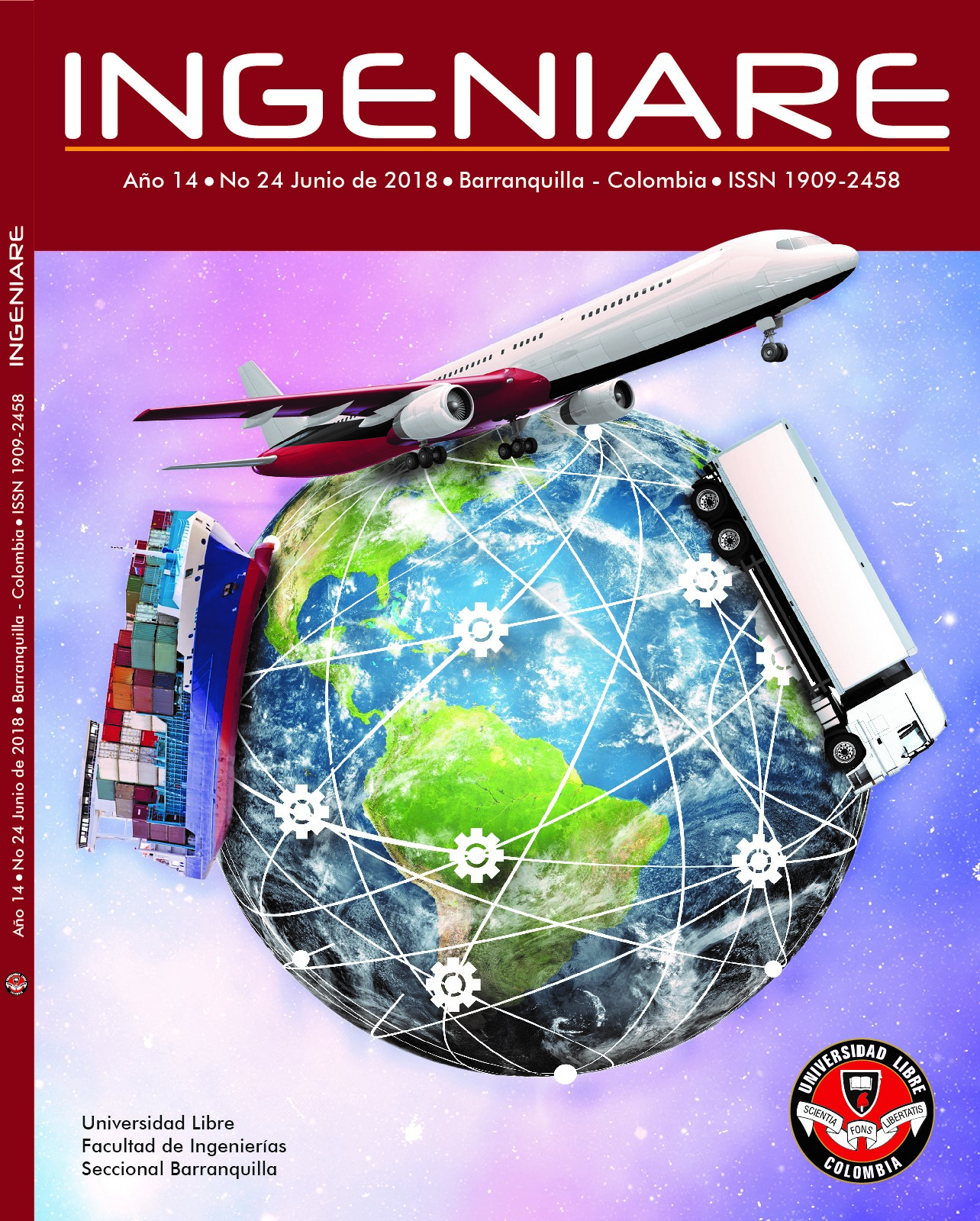Aplicación del método de diseño para manufactura y ensamblaje a un vehículo de tracción humana de tres ruedas como alternativa de transporte en la ciudad de Montería
DOI:
https://doi.org/10.18041/1909-2458/ingeniare.24.5174Palabras clave:
DFMA, Análisis de Elementos Finitos, Vehículo de Tracción HumanaResumen
Este trabajo presenta el diseño de un vehículo de tracción humana como alternativa de transporte sostenible en Montería, con el fin de reducir contaminación, ruido y mejorar la salud de los usuarios. Se empleó la metodología de diseño para manufactura y ensamble DFMA con el objetivo de reducir procesos de manufactura, complejidad en el ensamble y costos. Además, se realizó un análisis de esfuerzos en el chasis usando elementos finitos teniendo en cuenta las condiciones del terreno y las exigencias antivuelco definidas por ASME (2014). Los costos de fabricación se redujeron en 32 % comparado con un diseño anterior sin DFMA.
Descargas
Referencias
2. Baran, C., Mitchell, G. C., & Hellstrom, W. J. G. (2014). Cycling-Related Sexual Dysfunction in Men and Women: A Review. Sexual Medicine Reviews, 2, 93–101. http://doi.org/10.1002/smrj.32
3. behance. (2014). Retrieved from https://www.behance.net/gallery/11761807/Worlds-fastest-bike-the-VeloX-3-Decal-Design
4. Buitrago, E. (2011). Diseño del sistema de suspensión de un vehículo monoplaza tipo formula SENA. UNIVERSIDAD NACIONAL DE COLOMBIA SEDE MEDELLIN.
5. Corporación Fondo de Prevención Vial. (2013). Guía de CicloInfraestructura Ejemplos ilustrados y soluciones.
6. Gulati, E. V., Mehta, E. S., Kashyap, A., & Pawar, K. (2012). Design and FEA of a Recumbent Trike, 7(11).
7. Heisler, H. (2002). Suspension. In Advanced Vehicle Technology (pp. 368–449).
8. Horwitz, R. M. (2010). The Recumbent Trike Design Primer.
9. Jazar, R. N. (2008). Vehicle Dynamics: Theory and Application (Vol. 8). http://doi.org/10.1007/978-0-387-74244-1
10. Jazar, R. N. (2014). Vehicle dynamics: Theory and Application (Vol. 2). http://doi.org/10.1016/0022-4898(87)90012-7
11. Jensen, G. M. (1980). Biomechanics of the lumbar intervertebral disk: a review. Physical Therapy, 60(6), 765–773.
12. Kerr, a., Rafferty, D., Moffat, F., & Morlan, G. (2007). Specificity of recumbent cycling as a training modality for the functional movements; sit-to-stand and step-up. Clinical Biomechanics, 22, 1104–1111. http://doi.org/10.1016/j.clinbiomech.2007.06.006
13. Leibovitch, I., & Mor, Y. (2005). The vicious cycling: Bicycling related urogenital disorders. European Urology, 47, 277–286. http://doi.org/10.1016/j.eururo.2004.10.024
14. Sommer, F., Goldstein, I., & Korda, J. B. (2010). Bicycle Riding and Erectile Dysfunction: A Review. Journal of Sexual Medicine, 7, 2346–2358. http://doi.org/10.1111/j.1743-6109.2009.01664.x
15. Zhou, Y., Shen, G., & Huang, X. (2011). Advanced Research on Computer Science and Information Engineering (Vol. 152). http://doi.org/10.1007/978-3-642-21402-8


